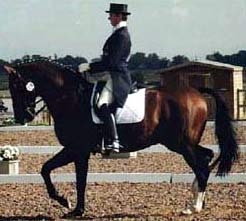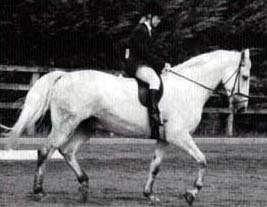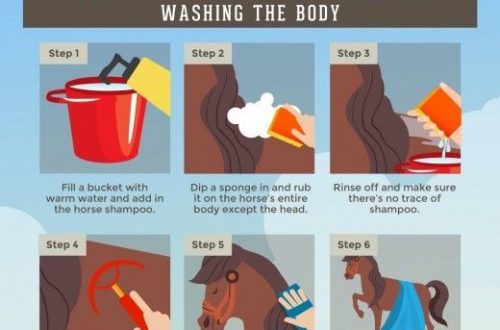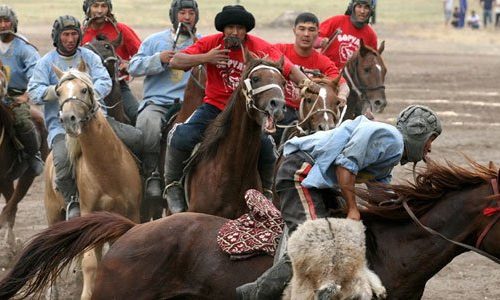
Correct landing
 In many books it is written that the correct landing is the key to success. This statement is not without meaning. Many of the problems that a rider has with a horse, such as uneven pace, lack of momentum, lack of flexibility, nape tuck, arched back, are due to improper seating, poor contact with the horse, and poor coordination.
In many books it is written that the correct landing is the key to success. This statement is not without meaning. Many of the problems that a rider has with a horse, such as uneven pace, lack of momentum, lack of flexibility, nape tuck, arched back, are due to improper seating, poor contact with the horse, and poor coordination.
The horse is a reflection of its rider, therefore, in this case, do not forget about folk wisdom – “There is nothing to kick on the mirror if the face is crooked”! If your horse is jogging, kicking on gains, not pushing with his hind legs, he is not balanced. Lack of balance is not a diagnosis, but an acquired quality, so pay attention to how you sit before you demand something from the horse.
In the picture you see the correct fit, which is shown to us by Mr. Carl Hester. To get a feel for how to properly sit in the saddle, try first pulling your knees up to the pommel and lowering yourself into the deepest part of the saddle, then lower your legs down to the sides of the horse. This exercise will initially accustom you to the feeling of the correct landing. To begin with, try to figure out for yourself which parts of your body should be in contact with the saddle and which should not. It is best to do this exercise when the horse is standing.
You should sit on both pelvic bones, but at the same time, without touching the tailbone of the saddle. With a proper seat, you should be touching the saddle with your two hipbones and your pubic bone. The main load will fall on the hip bones.
The thigh should be vertical to the saddle and be an extension of a straight line between your body and leg. Compare picture 1 and picture 2 and you’ll see what I’m talking about. In the second picture, the rider is sitting in the saddle, as if on a chair, and his thigh forms an angle relative to the body.
Pay attention to the hunched back! Humpback riders make humpback horses. It has been noted by many veterinarians that the uneven distribution of muscles along the horse’s spine is entirely dependent on rider seating. Remember that the horse senses the slightest inaccuracies in the rider’s posture and reacts to them with appropriately incorrect movements.
 The leg from hip to knee should be relaxed and close to the wing of the saddle. The inside of the knee should be pressed against the saddle. However, you should not cling to the saddle with your knees. Previously, it was believed that the rider should hold on primarily with his knees. This landing is bad because the lower part of the leg is not pressed against the side of the horse, and therefore there is no constant control over the movement of the horse. There was also an opposite theory, according to which the rider’s knee should not be pressed against the saddle, which leads to two problems at once. Firstly, the lower part of the leg goes too forward, and secondly, the work of the upper leg is almost impossible. The knee should be so close to the saddle that your lower leg from the knee is fixed at an angle and rests against the side of the horse.
The leg from hip to knee should be relaxed and close to the wing of the saddle. The inside of the knee should be pressed against the saddle. However, you should not cling to the saddle with your knees. Previously, it was believed that the rider should hold on primarily with his knees. This landing is bad because the lower part of the leg is not pressed against the side of the horse, and therefore there is no constant control over the movement of the horse. There was also an opposite theory, according to which the rider’s knee should not be pressed against the saddle, which leads to two problems at once. Firstly, the lower part of the leg goes too forward, and secondly, the work of the upper leg is almost impossible. The knee should be so close to the saddle that your lower leg from the knee is fixed at an angle and rests against the side of the horse.
Remember, if you strongly cling to the saddle with your knee, then you, as it were, squeeze yourself out of the saddle, as a result of which the shock absorption of the horse does not occur, and you simply fall out of the saddle. This error is common among beginner riders and is the reason why many cannot sit in the saddle at training trot and canter.
When you are eating at a trot or canter, try to think of your lower leg and pull it down with your heel at a slightly angled back. That is, for each pace of a trot or canter, work out with your heel and pull your leg as low as possible and in no case not forward, but vice versa, back. Imagine that you are kneeling in front of a wall – you should make approximately the same movements. Look at Figure 2 and you will see that the rider’s lower leg is not bent from the knee back, as a result of which he does not sit deep and has no way to absorb the shocks of the horse.
The calf muscles should be tense, but not much. Otherwise, the horse will not take your strokes on the sides as a signal to move forward. To send the horse correctly, the rider’s heel must be lower than the toe. How many times can one observe how, when trying to send the horse forward, the heel goes up, and the rider simply scratches it on the side of the horse. The horse, on the other hand, does not respond to such actions, since with a lifted heel, the force of the calf muscle weakens, and he perceives this more as a stroke. When the leg, slightly bent at the knee, is extended downward and the heel is lowered, the muscle tenses slightly and this is a more understandable signal for the horse. For example, compare the position of the legs of the riders in images 1 and 2.
- Alexander 14 April 2008 city
Response
- Alexander 14 April 2008 city
Response
- K_hundred 19 April 2011 city
I liked the way it was written) Thanks for the info! Answer
 mother.of.smile 15th of June 2011
mother.of.smile 15th of June 2011thanks) great article) Answer
- New Time July 6 2012 city
Useful information)) Yesterday I just suffered with this at a gallop. Now I will keep it in mind) Answer
- Ronsar 2 2012 of August
Don’t think that I’m being smart, but several times rereading the article, I asked myself the question – what are these, translation flaws ??? “The thigh should be vertical to the saddle and be an extension of a straight line between your body and leg.” What is it like? Even in the photo, Mr. Hester’s hip is at least 20 degrees from vertical. And the fact that the thigh is a continuation of the line between the body and the leg. The thigh, like, part of the leg? As for the pelvic bones – also some kind of mess. We actually sit on the buttocks, because these are the lowest points of the pelvis. Sitting on some other bones is generally problematic (for half an hour, I probably studied the structure of the pelvis). The rest, by the way, is quite real and useful. But, a fly in the ointment … And another interesting point. This is what kind of strength you need to have in order to squeeze your knees and squeeze yourself out of the saddle !? Probably, with such an effort, the horse can crunch! Once again, I hope that the comment does not sound like a stupid nitpick. Answer
 Nikole 15 April 2014 city
Nikole 15 April 2014 cityPushing yourself out of the saddle with very tightly pressed knees is possible due to the amplitude of the horse’s movement, each new push shifts your tightly pressed knees up, precisely because you “grabbed them to the horse.” It’s hard to describe it in words, but it’s true. The article is quite useful, despite translation errors and grammatical errors))) Answer
- Kribeleva November 22 2012 city
“Squeezing yourself out of the saddle” means that novice riders raise their knees because they are pinched and lose balance as a result. Answer





